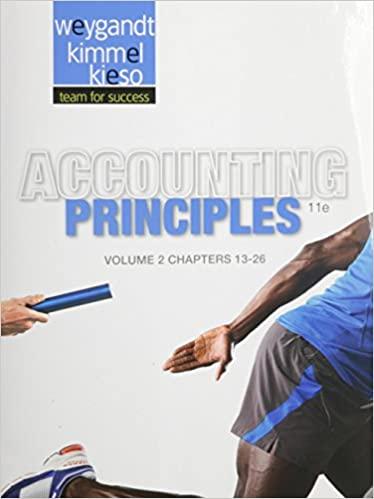Question
1. Which of the following is not one of the factors to consider in determining whether a business entity meets the definition of a reportable
1. Which of the following is not one of the factors to consider in determining whether a business entity meets the definition of a reportable segment:
A: It engages in business activities from which it may earn revenues and incur expenses.
B: It engages in sales activities with unaffiliated entities.
C: Its operating results are regularly reviewed by the entitys chief operating decision maker.
D: Its discrete financial information is available.
___________________________________________
2. Two or more operating segments may be aggregated into a single operating segment if the segments have similar economic characteristics, and if the segments are similar. Which of the following is not one of the factors used to determine similarity
A: Employment of many of the same people across the segments
B: The nature of the products and services
C: The nature of the production processes
D: The type or class of customer for their products and services
______________________________________________________________
3. Which of the following is not true regarding the treatment of inventories in interim financial statements:
A: Companies may not take a physical inventory other than at year-end
B: LIFO liquidation should not be recognized if the company expects the inventory layer giving rise to the liquidation profit to be replaced
C: Companies should always recognize the cost of the variances in the interim reporting period.
D: In the lower of cost or market test, if the decline in the market value of the inventory is expected to be restored by year-end, the decline is not recognized at the interim date.
_____________________________________________________
4. Which of the following is not true regarding the recognition of costs that benefit more than one interim reporting period?
A: Costs are generally recognized as expenses in the periods in which they are incurred.
B: The cost of quantity discounts should be recognized in the interim period, even if the annual purchase level has not yet been made if the company expects that the annual sales volume will be sufficient for the customer to receive the discount.
C: The estimated annual cost of property taxes that can be reliably estimated should be apportioned equally to interim reporting periods.
D: Even though the entire cost of advertising may be recognized as an expense in the annual reporting period, that expense is allocated over the interim reporting periods that benefit from the expenditure
________________________________________________
5. Which of the following is true with respect to accounting changes?
A: Companies only record the effects of the change in accounting principles in the annual financial statements.
B: SFAS 154 requires that the change in accounting principles be made only in the most recent year presented in the comparative financial statements, with a cumulative adjustment to the beginning balance of assets and liabilities affected by the change in the earliest period reported, and an offsetting adjustment to Retained Earnings for that year.
C: The effects of changes in accounting principles are reflected only prospectively from the date of the change.
D: SFAS 154 requires that the change in accounting principles be made retrospectively, with a cumulative adjustment to the beginning balance of assets and liabilities affected by the change in the earliest period reported, and an offsetting adjustment to Retained Earnings.
Step by Step Solution
There are 3 Steps involved in it
Step: 1

Get Instant Access to Expert-Tailored Solutions
See step-by-step solutions with expert insights and AI powered tools for academic success
Step: 2

Step: 3

Ace Your Homework with AI
Get the answers you need in no time with our AI-driven, step-by-step assistance
Get Started


